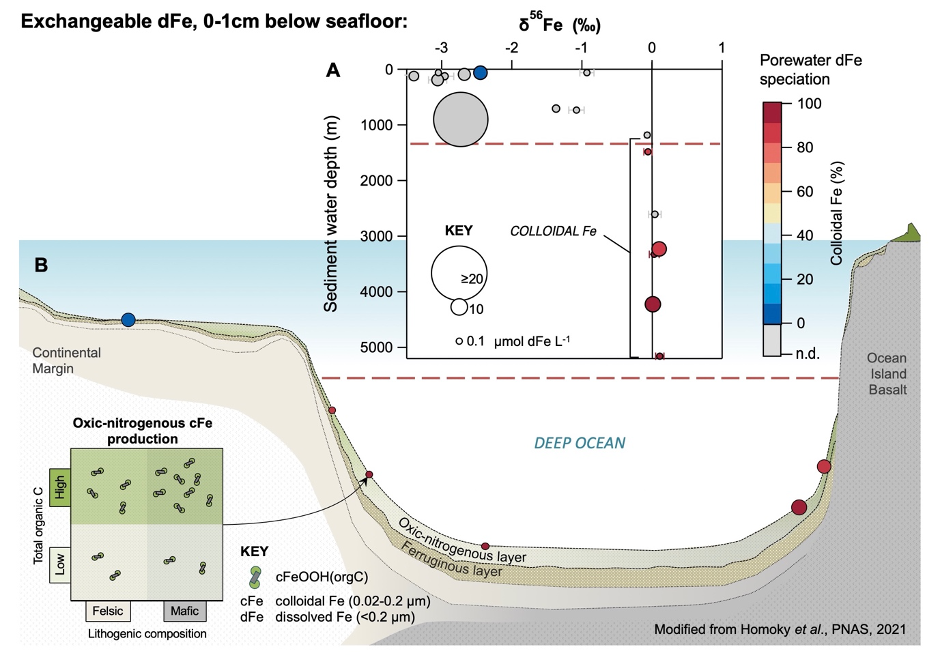Deep sea lithogenic weathering a source of iron colloids for the ocean
Homoky and co-workers (2021, see reference below) determined the isotope composition of dissolved iron (Fe) profiles in shallow surface sediments of the South Atlantic Uruguayan margin, from shelf-top to abyssal floor. They confirmed the presence of lithogenic iron isotope compositions in the oxidising zones of sediment porewaters, and further showed that these signatures are uniquely attributed to the presence of iron colloids (20-200nm). An isotopically constrained porewater mass-balance model is used to show that reductive dissolution and oxidation cannot fully account for the production of iron colloids, whereas non-reductive weathering of lithogenic phases and the production of nano-scale Fe organo-minerals can explain these data. An exchangeable inventory of dissolved iron in porewater is compiled for the ocean depths based on all the sites currently observed and suggests that sedimentary supply to the deep ocean interior will be dominated by organo-mineral iron colloids bearing lithogenic isotope signatures.

You can also read the press releases about this paper: Seafloor nutrient vital in global food chain (University of Leeds) and Deep Sea Sediments Fuel the Oceans (from University of South Florida).
Reference:
W. B. Homoky, T.M. Conway, S.G. John, D. König, F. Deng., A. Tagliabue, and R.A. Mills. (2021) Iron colloids dominate sedimentary supply to the ocean interior. Proc. Natl. Acad. Sci. U.S.A. 118, e2016078118. Access the paper: https://doi.org/10.1073/pnas.2016078118
